
Arizona consistently produces the highest yields and quality of crops found anywhere. This is a testimony to not only the skill of Arizona farmers and the capacity to irrigate and produce crops in the desert but also to the productive soils that we are fortunate to have in this region. Soils are commonly considered to serve as the foundation of agriculture (Parikh and James, 2012) and that is certainly true in Arizona.
Many people think Arizona is composed of nothing but rocks and sand. While we do have an abundance of rocks and sand in Arizona, this region also has many areas with soils that are geologically young, with high natural fertility, and extremely productive if provided with sufficient water and good management.
Most Arizona crops are produced on alluvial soils that are formed from the deposits of sediments from periodic flooding of rivers and streams over thousands and millions of years. The alluvial soils used in Arizona crop production vary tremendously across the state and the entire desert Southwest. They vary in texture, depth, and structure. Our crop production capacities in this region are supported by the irrigation water and these incredible soil resources.
A great example of the rich alluvial soils of this region can be found in the lower Colorado River valleys including Mohave Valley, AZ; Parker Valley, AZ; Palo Verde Valley, CA; Imperial Valley, CA; Bard Valley, CA; Yuma Valley, Arizona; and the lower Gila Valleys of Arizona. The alluvial sediments that have formed the soils we encounter in the lower Colorado River system are estimated to have been deposited to several hundred meters (several thousand feet) in depth in the current river channel approximately 4.63 to 4.80 million years ago (Crow et al., 2021 and Kimbrough et al., 2015). These sediments are geologically “young” in contrast to the ancient crystalline rocks at the bottom of the Grand Canyon, often referred to as the “Vishnu Basement Rocks” that are 1,680 – 1,750 Ma (1.68 – 1.75 billion (b) years ago), (Crow, et al., 2021 and Mathis and Bowman, 2018).
In 1941, Dr. Hans Jenny from the University of California – Berkeley, published Factors of Soil Formation: A System of Quantitative Pedology. [Pedology is the scientific study of soils and their weathering profiles, including the formation, nature, ecology, and classification of soil.] This book is a classic and fundamental piece of work in the study of soil science due to Jenny’s capacity to translate the basic concepts into a quantitative scientific framework through a rigorous definition of the soil system and its genesis, including the identification and separation of dependent and independent variables.
Jenny described soil formation as a function of five factors: climate, biota (plants and animals), relief (topography), and parent material, all operating together over time (Figure 1).
Alluvial soils tend to be highly variable both horizontally across the landscape and vertically down through the soil profile. This can sometimes present challenges in field-level management for crop production, particularly when soil types change within a given field or relatively small area, which is rather common.
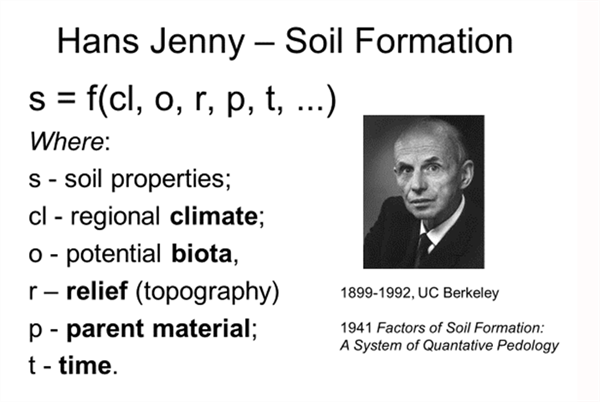
Figure 1. Hans Jenny and the factors of soil formation, 1941.
We commonly find that soil formation will vary tremendously across a landscape with natural soil variation across the landscape in both the horizontal and vertical dimensions with the distinct organization of soil horizons (Figures 2 and 3).
It is important to recognize soil variability in a crop production system because different soil types will have unique physical and chemical properties that can affect things like soil-water holding capacity, drainage, leaching capacities, soil fertility, and plant root development.
The United States Department of Agriculture (USDA) Natural Resources Conservation Service (NRCS) has conducted extensive soil surveys across the United States for each state by county. Soil surveys can be accessed on-line at the following site: https://websoilsurvey.nrcs.usda.gov/app/
A broad map selected from NRCS Soil Survey of the Yuma area graphically depicts both the alluvial nature and variability of the soil resources commonly encountered in this area. https://websoilsurvey.nrcs.usda.gov/app/WebSoilSurvey.aspx
It is important to recognize the importance and high value of these natural soil resources that our agricultural systems are developed and dependent upon and be alert to the natural variability associated with the alluvial soils in this region.
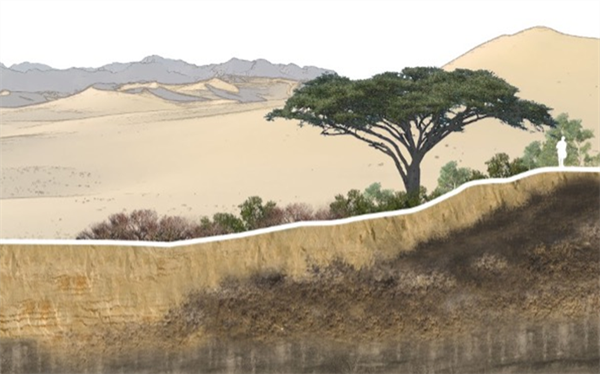
Figure 2. Natural variation of soils across a landscape
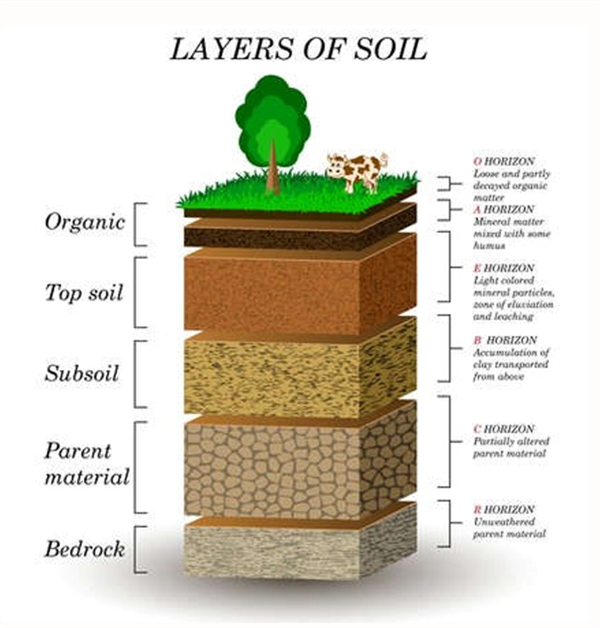
Figure 3. Layers of soil, basic organization of soil horizons.
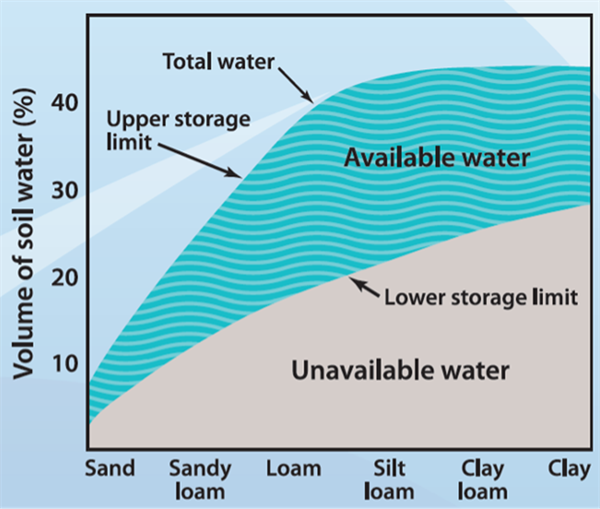
Figure 4. Soil volume, soil texture, and water holding capacity
relationships. Source: Kansas State University Agronomy Department, Soil
Laboratory Manual.
References:
Crow, R.S., J. Schwing, K.E. Karlstrom, M. Heizler, P.A. Pearthree, P.K. House, S. Dulin, S.U. Jänecke, M. Stelten, and L.J. Crossey. 2021. Redefining the age of the lower Colorado River, southwestern United States: Geology, v. 49, p. 635–640, https://doi.org/10.1130/G48080.1
Jenny, H. 1941. Factors of Soil Formation: A System of Quantitative Pedology. McGraw-Hill Book Company. New York and London.
https://netedu.xauat.edu.cn/sykc/hjx/content/ckzl/6/2.pdf
Kimbrough, D.L., M. Grove, M., G.E. Gehrels,, R.J. Dorsey, K.A. Howard, O. Lovera, A. Aslan, P.K. House, and P.A. Pearthree. 2015. Detrital zircon U-Pb provenance of the Colorado River: A 5 m.y. record of incision into cover strata overlying the Colorado Plateau and adjacent regions:
Geosphere, v. 11, p. 1719–1748, https://doi.
org/10.1130/GES00982.1.
Kansas State University Agronomy Department, Soil Laboratory Manual: Soil and water relationships. https://kstatelibraries.pressbooks.pub/soilslabmanual/chapter/soil-and-water-relationships/
Mathis, A. and C. Bowman. 2018. Telling Time at Grand Canyon National Park. United States Department of the Interior, National Park Service.
Parikh, S. J. and B.R. James. 2012. Soil: The Foundation of Agriculture. Nature Education Knowledge 3(10):2
https://www.nature.com/scitable/knowledge/library/soil-the-foundation-of-agriculture-84224268/#
Hi, I’m Chris, and I’m thrilled to be stepping into the role of extension associate for plant pathology through The University of Arizona Cooperative Extension in Yuma County. I recently earned my Ph.D. in plant pathology from Purdue University in Indiana where my research focused on soybean seedling disease caused by Fusarium and Pythium. There, I discovered and characterized some of the first genetic resources available for improving innate host resistance and genetic control to two major pathogens causing this disease in soybean across the Midwest.
I was originally born and raised in Phoenix, so coming back to Arizona and getting the chance to apply my education while helping the community I was shaped by is a dream come true. I have a passion for plant disease research, especially when it comes to exploring how plant-pathogen interactions and genetics can be used to develop practical, empirically based disease control strategies. Let’s face it, fungicide resistance continues to emerge, yesterday’s resistant varieties grow more vulnerable every season, and the battle against plant pathogens in our fields is ongoing. But I firmly believe that when the enemy evolves, so can we.
To that end I am proud to be establishing my research program in Yuma where I will remain dedicated to improving the agricultural community’s disease management options and tackling crop health challenges. I am based out of the Yuma Agricultural Center and will continue to run the plant health diagnostic clinic located there.
Please drop off or send disease samples for diagnosis to:
Yuma Plant Health Clinic
6425 W 8th Street
Yuma, AZ 85364
If you are shipping samples, please remember to include the USDA APHIS permit for moving plant samples.
You can contact me at:
Email: cdetranaltes@arizona.edu
Cell: 602-689-7328
Office: 928-782-5879
With the advent of low-cost computing systems that can identify and locating crop and weed plants in real-time, there’s been an explosion in the interest, investment and development of technologies for robotic/automated weed control. A quick internet search will reveal over 50 companies or university research groups working in this space. You are probably familiar with many of these as they are domestically based and have been discussed in previous articles, but there are also numerous efforts being made in Europe that may be of interest. One of these is highlighted here. In future articles, I’ll discuss additional technologies.
Andela Techniek & Innovatie1 is a Dutch company who appears to be making good progress with an innovative robotic weeding machine (Fig. 1). The solar powered device spans 29.5 feet and is equipped with 12 robotic delta arms for removing in-row weeds (Fig. 2). A camera-based imaging system is used to differentiate crop plants from weeds and provide coordinates of targeted weeds to the delta arms. Each delta arm is equipped with an end-effector that uses heat to kill the weed when it comes into contact with it. A company video showing the device operating in carrot and onion crops can be found by clicking here or on the images below.
Stay tuned!
Fig. 1. Andela Techniek & Innovatie1 solar powered robotic weeding machine. (Photo credits: Andela Techniek & Innovatie)
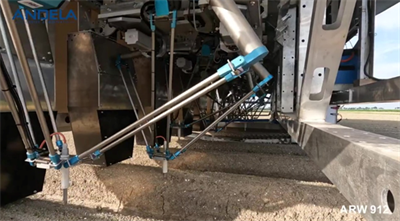
Fig. 2. Delta arms and end effector of Andela Techiek &
Innovatie1 robotic weeding machine. (Photo credits:
Andela Techniek & Innovatie)
The IPM team frequently receives questions from our friend PCAs in Yuma regarding possible injury with herbicide combinations. A recent inquiry was about the addition of Prowl (pendimethalin) to Prefar herbicide preplant.
We found in our archives an evaluation that was done in 2002 by Barry Tickes from Arizona Cooperative Extension that addressing this question. The evaluation was located on 8th Street and the Levee in Yuma CO and included the following treatments: Dacthal at 10 and 12lb, Prefar at 6qt alone and with the addition of 0.5pt Prowl. All treatments were applied in 20 gallon/A spray volume as a 50% band on 42-inch beds. The plot size for this experiment was 600 ft. x 8 beds. Immediate incorporation was done with sprinkler irrigation. The results reported are in the following table:
|
Herbicide |
Rate |
Phyto (%Stunting) |
Control: Nettleleaf Goosefoot |
Control: Groundcherry |
|
1. Dacthal |
10lb |
0 |
95 |
90 |
|
2. Dacthal |
12lb |
0 |
95 |
95 |
|
3. Prefar |
6qt |
0 |
30 |
0 |
|
4. Prefar+Prowl |
6qt+0.5pt |
20 |
50 |
0 |
|
5. Untreated |
-- |
0 |
0 |
0 |
|
|
|
|
|
|
As can be seen the addition of 0.5pt of pendimethalin to 6qt of bensulide produced 20% stunting in this case.
This time of year, John would often highlight Lepidopteran pests in the field and remind us of the importance of rotating insecticide modes of action. With worm pressure present in local crops, it’s a good time to revisit resistance management practices and ensure we’re protecting the effectiveness of these tools for seasons to come. For detailed guidelines, see Insecticide Resistance Management for Beet Armyworm, Cabbage Looper, and Diamondback Moth in Desert Produce Crops .
VegIPM Update Vol. 16, Num. 20
Oct. 1, 2025
Results of pheromone and sticky trap catches below!!
Corn earworm: CEW moth counts declined across all traps from last collection; average for this time of year.
Beet armyworm: BAW moth increased over the last two weeks; below average for this early produce season.
Cabbage looper: Cabbage looper counts increased in the last two collections; below average for mid-late September.
Diamondback moth: a few DBM moths were caught in the traps; consistent with previous years.
Whitefly: Adult movement decreased in most locations over the last two weeks, about average for this time of year.
Thrips: Thrips adult activity increased over the last two collections, typical for late September.
Aphids: Aphid movement absent so far; anticipate activity to pick up when winds begin blowing from N-NW.
Leafminers: Adult activity increased over the last two weeks, about average for this time of year.







